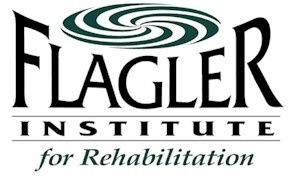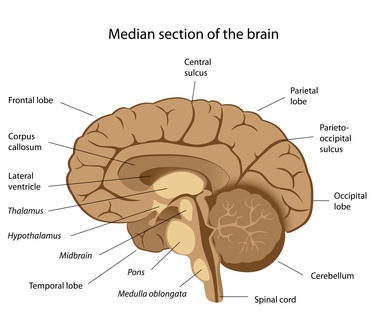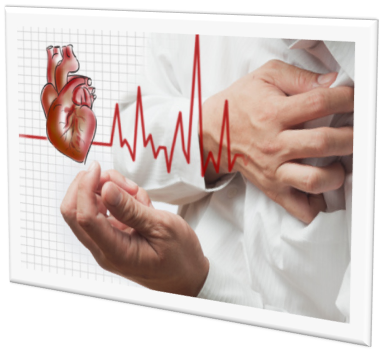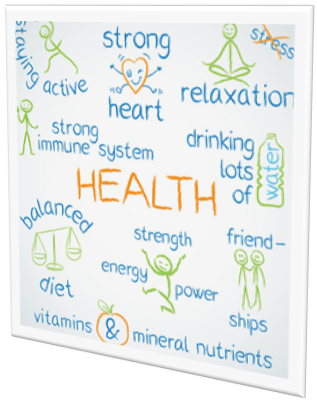 | |
|
Our New State of the Art 6600 square ft
facility
|
|
 | |
|
Physical Therapy Helps!
|
|
|
The Connection Between Stroke and Physical
Therapy
|
|
|
A stroke can
affect men and women of all ages and carries with it damaging and potentially
life-threatening complications.
 Simply stated, a stroke refers to an
unexpected loss of brain function that occurs when blood flow to the brain is
interrupted or when blood vessels in the brain rupture.
When the blood flow is affected, the brain cells in the affected area
die, and this can cause long-term damage. Simply stated, a stroke refers to an
unexpected loss of brain function that occurs when blood flow to the brain is
interrupted or when blood vessels in the brain rupture.
When the blood flow is affected, the brain cells in the affected area
die, and this can cause long-term damage.
Depending on
the area injured, a stroke can cause an individual to lose his or her ability to
see, speak, read or write, along with loss of memory or an impaired thought
process. Also, movement is limited to partial or full paralysis. The slightest
of delays in blood flow can cause damage to the brain.
The
longer the brain is without important nutrients and oxygen carried by the blood,
the higher the risk of permanent damage.
So, what are
the risk factors of stroke?
They are high
blood pressure, high cholesterol levels, certain heart conditions, diabetes,
obesity, smoking, stress, and drinking too much alcohol. In addition women are
subject to an extra set of risk factors, such as menopause and hormonal changes,
as well as conditions associated with pregnancy and the use of birth control
pills. A low activity level has further been linked to stroke risk, bringing yet
another benefit to regular exercise.
Fortunately,
you can identify a stoke early through FOUR MAJOR WARNING SIGNS and potentially
decrease the severity of the damage:
Each of these
warning signs can occur alone or in any combination. So, learn and remember the
list. Remember, timing is key. Getting treatment quickly can help counteract the
damaging effect of a stroke. So if any of these warning signs occur, be sure to
get medical attention immediately!
| |
|
Impact of a Stroke
|
|
|
Knowing the
warning signs of a stroke can not only save your own life, but that of someone
close to you as well. In fact, most of us know someone who has suffered a stroke
and have seen its damaging effects.
Share this
information with members of your family, especially those who are aging, and you
just may save a life.
| |
|
Physical Therapy and Stroke Recovery
|
|
 You may not
expect physical therapy to play an important part in stroke recovery, but it is
often referred to as an indispensable tool. While there are other types of
stroke rehabilitation, including speech and occupational therapy, physical
therapy specifically addresses physical damage. Of course, the type of
assistance necessary depends on the type of damage that is
present. You may not
expect physical therapy to play an important part in stroke recovery, but it is
often referred to as an indispensable tool. While there are other types of
stroke rehabilitation, including speech and occupational therapy, physical
therapy specifically addresses physical damage. Of course, the type of
assistance necessary depends on the type of damage that is
present.
As physical
therapists, we are trained to teach strengthening exercises to retrain the body
following a stroke. Using a series of
custom-designed stretches and exercises, we can help a stroke victim broaden his
or her range of motion, build muscle, and increase endurance.
Before establishing a treatment plan, we test the stroke victim’s current
levels of motion, strength and endurance, and use this valuable information to
create a plan that best suits the individual.
Word
of Caution:
Never
underestimate the range of treatment provided by your physical therapist. Even
if the stroke victim is suffering from partial paralysis or weakness as a result
of the stroke, physical therapy can prove to be very beneficial. In the case of
paralysis, we can teach the stroke victim ways to compensate for the loss, in
addition to prescribing treatment for the affected limb(s). For stroke sufferers
forced to combat ongoing weakness, physical therapy can help to strengthen the
extremities as a long-term solution.Physical therapy plays an integral role in
stroke recovery. If you or someone you know has
suffered a stroke, contact your physical therapist now to open a new door to
recovery.
| |
Friday, March 1, 2013
Stretching at work.
Monday, February 18, 2013
Suffering from Arthritis aches and pains?
here is some good information to help...
http://www.therapynewsletter.com/myarchive.php?userid=385&id=12710&secret=3ec6a0ea4163d1ce
here is some good information to help...
http://www.therapynewsletter.com/myarchive.php?userid=385&id=12710&secret=3ec6a0ea4163d1ce
Wednesday, February 13, 2013
Heart-healthy
diet: 8 steps to prevent heart disease
Although you might
know that eating certain foods can increase your heart disease risk, it's often
tough to change your eating habits. Whether you have years of unhealthy eating
under your belt or you simply want to fine-tune your diet, here are eight heart-healthy
diet tips. Once you know which foods to eat more of and which foods to limit,
you'll be on your way toward a heart-healthy diet.
1. Control your
portion size
How much you eat is
just as important as what you eat. Overloading your plate, taking seconds and
eating until you feel stuffed can lead to eating more calories, fat and
cholesterol than you should. Portions served in restaurants are often more than
anyone needs. Keep track of the number of servings you eat — and use proper
serving sizes — to help control your portions. Eating more of low-calorie,
nutrient-rich foods, such as fruits and vegetables, and less of high-calorie,
high-sodium foods, such as refined, processed or fast foods, can shape up your
diet as well as your heart and waistline.
A serving size is a
specific amount of food, defined by common measurements such as cups, ounces or
pieces. For example, one serving of pasta is 1/2 cup, or about the size of a
hockey puck. A serving of meat, fish or chicken is 2 to 3 ounces, or about the
size and thickness of a deck of cards. Judging serving size is a learned skill.
You may need to use measuring cups and spoons or a scale until you're
comfortable with your judgment.
2. Eat more vegetables
and fruits
Vegetables and fruits
are good sources of vitamins and minerals. Vegetables and fruits are also low
in calories and rich in dietary fiber. Vegetables and fruits contain substances
found in plants that may help prevent cardiovascular disease. Eating more
fruits and vegetables may help you eat less high-fat foods, such as meat,
cheese and snack foods. Featuring vegetables
and fruits in your diet can be easy. Keep vegetables washed and cut in your
refrigerator for quick snacks. Keep fruit in a bowl in your kitchen so that
you'll remember to eat it. Choose recipes that have vegetables or fruits as the
main ingredient, such as vegetable stir-fry or fresh fruit mixed into salads.
|
Fruits and
vegetables to choose
|
Fruits and
vegetables to avoid
|
|
·
Fresh or frozen
vegetables and fruits
·
Low-sodium canned
vegetables
·
Canned fruit packed
in juice or water
|
·
Coconut
·
Vegetables with
creamy sauces
·
Fried or breaded
vegetables
·
Canned fruit packed
in heavy syrup
·
Frozen fruit with
sugar added
|
3. Select whole grains
Whole grains are good
sources of fiber and other nutrients that play a role in regulating blood
pressure and heart health. You can increase the amount of whole grains in a
heart-healthy diet by making simple substitutions for refined grain products.
Or be adventuresome and try a new whole grain, such as whole-grain couscous,
quinoa or barley. Another easy way to
add whole grains to your diet is ground flaxseed. Flaxseeds are small brown
seeds that are high in fiber and omega-3 fatty acids, which can lower your
total blood cholesterol. You can grind the seeds in a coffee grinder or food
processor and stir a teaspoon of them into yogurt, applesauce or hot cereal.
|
Grain products to
choose
|
Grain products to
limit or avoid
|
|
·
Whole-wheat flour
·
Whole-grain bread,
preferably 100% whole-wheat bread or 100% whole-grain bread
·
High-fiber cereal
with 5 g or more of fiber in a serving
·
Whole grains such as
brown rice, barley and buckwheat (kasha)
·
Whole-grain pasta
·
Oatmeal (steel-cut
or regular)
·
Ground flaxseed
|
·
White, refined flour
·
White bread
·
Muffins
·
Frozen waffles
·
Corn bread
·
Doughnuts
·
Biscuits
·
Quick breads
·
Granola bars
·
Cakes
·
Pies
·
Egg noodles
·
Buttered popcorn
·
High-fat snack
crackers
|
4. Limit unhealthy
fats and cholesterol
Limiting how much
saturated and trans fats you eat is an important step to reduce your blood
cholesterol and lower your risk of coronary artery disease. A high blood
cholesterol level can lead to a buildup of plaques in your arteries, called
atherosclerosis, which can increase your risk of heart attack and stroke.
The American Heart
Association offers these guidelines for how much fat and cholesterol to include
in a heart-healthy diet:
|
Type of fat
|
Recommendation
|
|
Saturated fat
|
Less than 7% of your
total daily calories, or less than 14 g of saturated fat if you follow a
2,000-calorie-a-day diet
|
|
Trans fat
|
Less than 1% of your
total daily calories, or less than 2 g of trans fat if you follow a
2,000-calorie-a-day diet
|
|
Cholesterol
|
Less than 300 mg a
day for healthy adults; less than 200 mg a day for adults with high levels of
LDL ("bad") cholesterol or those who are taking
cholesterol-lowering medication
|
The best way to reduce
saturated and trans fats in your diet is to limit the amount of solid fats —
butter, margarine and shortening — you add to food when cooking and serving.
You can also reduce the amount of saturated fat in your diet by trimming fat
off your meat or choosing lean meats with less than 10 percent fat. You can also use
low-fat substitutions when possible for a heart-healthy diet. For example, top
your baked potato with salsa or low-fat yogurt rather than butter, or use
low-sugar fruit spread on your toast instead of margarine. You may also want to
check the food labels of some cookies, crackers and chips. Many of these snacks
— even those labeled "reduced fat" — may be made with oils containing
trans fats. One clue that a food has some trans fat in it is the phrase
"partially hydrogenated" in the ingredient list. When you do use fats,
choose monounsaturated fats, such as olive oil or canola oil. Polyunsaturated
fats, found in nuts and seeds, also are good choices for a heart-healthy diet.
When used in place of saturated fat, monounsaturated and polyunsaturated fats
may help lower your total blood cholesterol. But moderation is essential. All
types of fat are high in calories.
|
Fats to choose
|
Fats to limit
|
|
·
Olive oil
·
Canola oil
·
Margarine that's
free of trans fats
·
Cholesterol-lowering
margarine, such as Benecol, Promise Activ or Smart Balance
|
·
Butter
·
Lard
·
Bacon fat
·
Gravy
·
Cream sauce
·
Nondairy creamers
·
Hydrogenated
margarine and shortening
·
Cocoa butter, found
in chocolate
·
Coconut, palm,
cottonseed and palm-kernel oils
|
5. Choose low-fat
protein sources
Lean meat, poultry and
fish, low-fat dairy products, and egg whites or egg substitutes are some of
your best sources of protein. But be careful to choose lower fat options, such
as skim milk rather than whole milk and skinless chicken breasts rather than
fried chicken patties. Fish is another good
alternative to high-fat meats. And certain types of fish are rich in omega-3
fatty acids, which can lower blood fats called triglycerides. You'll find the
highest amounts of omega-3 fatty acids in cold-water fish, such as salmon,
mackerel and herring. Other sources are flaxseed, walnuts, soybeans and canola
oil. Legumes — beans, peas
and lentils — also are good sources of protein and contain less fat and no
cholesterol, making them good substitutes for meat. Substituting plant protein
for animal protein — for example, a soy or bean burger for a hamburger — will
reduce your fat and cholesterol intake.
|
Proteins to choose
|
Proteins to limit or
avoid
|
|
·
Low-fat dairy
products such as skim or low-fat (1%) milk, yogurt and cheese
·
Egg whites or egg
substitutes
·
Fish, especially
fatty, cold-water fish, such as salmon
·
Skinless poultry
·
Legumes
·
Soybeans and soy
products, for example, soy burgers and tofu
·
Lean ground meats
|
·
Full-fat milk and other
dairy products
·
Organ meats, such as
liver
·
Egg yolks
·
Fatty and marbled
meats
·
Spareribs
·
Cold cuts
·
Hot dogs and
sausages
·
Bacon
·
Fried or breaded
meats
|
6. Reduce the sodium
in your food
Eating a lot of sodium
can contribute to high blood pressure, a risk factor for cardiovascular
disease. Reducing sodium is an important part of a heart-healthy diet. The
Department of Agriculture recommends:
·
Healthy adults have no
more than 2,300 milligrams (mg) of sodium a day (about a teaspoon)
·
People age 51 or
older, African-Americans, and people who have been diagnosed with high blood
pressure, diabetes or chronic kidney disease have no more than 1,500 mg of
sodium a day. Although reducing the
amount of salt you add to food at the table or while cooking is a good first
step, much of the salt you eat comes from canned or processed foods, such as
soups and frozen dinners. Eating fresh foods and making your own soups and
stews can reduce the amount of salt you eat. If you like the convenience of
canned soups and prepared meals, look for ones with reduced sodium. Be wary of
foods that claim to be lower in sodium because they are seasoned with sea salt
instead of regular table salt — sea salt has the same nutritional value as
regular salt.
Another way to reduce
the amount of salt you eat is to choose your condiments carefully. Many
condiments are available in reduced-sodium versions, and salt substitutes can
add flavor to your food with less sodium.
|
Low-salt items to
choose
|
High-salt items to
avoid
|
|
·
Herbs and spices
·
Salt substitutes
·
Reduced-salt canned
soups or prepared meals
·
Reduced-salt
versions of condiments, such as reduced-salt soy sauce and reduced-salt
ketchup
|
·
Table salt
·
Canned soups and
prepared foods, such as frozen dinners
·
Tomato juice
·
Soy sauce
|
You know what foods to
feature in your heart-healthy diet and which ones to limit. Now it's time to
put your plans into action. Create daily menus
using the six strategies listed above. When selecting foods for each meal and
snack, emphasize vegetables, fruits and whole grains. Choose lean protein
sources and limit high-fat and salty foods. Watch your portion sizes and add
variety to your menu choices. For example, if you have grilled salmon one
evening, try a black-bean burger the next night. This helps ensure that you'll
get all of the nutrients your body needs. Variety also makes your meals and
snacks more interesting.
8. Allow yourself an
occasional treat
Allow yourself an
indulgence every now and then. A candy bar or handful of potato chips won't
derail your heart-healthy diet. But don't let it turn into an excuse for giving
up on your healthy-eating plan. If overindulgence is the exception, rather than
the rule, you'll balance things out over the long term. What's important is
that you eat healthy foods most of the time.
Incorporate these
eight tips into your life, and you'll continue to find that heart-healthy
eating is both doable and enjoyable. With planning and a few simple
substitutions, you can eat with your heart in mind.
Thursday, February 7, 2013
Heart Health and Physical Therapy
 February is American Heart Month. The impact of heart disease is significant, since it affects the quality of life. According to the Centers for Disease Control and Prevention (CDC), cardiovascular disease is the leading cause of death in the United States; one in every three deaths is from heart disease and stroke, equal to 2,200 deaths per day.
February is American Heart Month. The impact of heart disease is significant, since it affects the quality of life. According to the Centers for Disease Control and Prevention (CDC), cardiovascular disease is the leading cause of death in the United States; one in every three deaths is from heart disease and stroke, equal to 2,200 deaths per day.
The good news is that lifestyle changes can make a difference. Your physical therapist can play an important role in improving your heart health. Don't wait until your physician tells you it's time to exercise, take some pre-emptive action. Call our office today and ask us to craft a "heart healthy" exercise program. Even if you have never exercised before, we'll improve the health of your heart with a safe, progressive exercise program. Expect to work closely with us, and together as a team, we'll improve the way your heart functions.
If you currently suffer from heart related issues, your physical therapist can help you regain an active lifestyle by working on three specific areas:
- Mobility issues
- Healthy eating and lifestyle changes
- Physical activities geared towards your specific abilities and goals
article_body
Thought for The Day
The Heart - An Amazing Organ
 The average heart rate of an average adult is 72 beats per minute. If you live to be 80 years old, your heart could beat almost 3 billion times. The heart is an amazing organ that keeps beating involuntarily and powers blood circulation for the entire body. Here are some important considerations for heart health.
The average heart rate of an average adult is 72 beats per minute. If you live to be 80 years old, your heart could beat almost 3 billion times. The heart is an amazing organ that keeps beating involuntarily and powers blood circulation for the entire body. Here are some important considerations for heart health.- Understand the impact of lifestyle - While genetics play a part in heart disease, lifestyle choices have a significant impact. Smoking, overeating, eating unhealthy food and a sedentary lifestyle are factors that must be improved, especially when heart disease runs in the family.
- Eat healthy - Minimize the consumption of sodium and trans fats. Eat healthy fruits and vegetables daily (try frozen versions when fresh produce is not in season as they hold the most nutrients).
- Join heart healthy programs - Several programs can help you achieve a heart healthy lifestyle. In September 2011, the CDC launched a national initiative called A Million Hearts that includes a list of partners (federal and private sector) committed to keeping people heart healthy. Among those participating are the American Heart Association, the YMCA, Walgreens, and numerous health insurance companies. You may want to consider challenging your family and friends to take the Million Hearts™ pledge (or taking the pledge yourself) at www.millionhearts.hhs.gov
- Keep Moving - Being active doesn't mean having to run on a treadmill or attend a workout class. Simple things like taking a daily walk, taking the stairs instead of the elevator, parking farther away from your destination and walking to it can make a difference. Just keep moving!
tips_body
The ABCS of a Healthy Heart
 Although exercise is an important part of heart disease prevention, it is important to remember the ABCS of a healthy heart. Consult your physician for more information on these four key factors:
Although exercise is an important part of heart disease prevention, it is important to remember the ABCS of a healthy heart. Consult your physician for more information on these four key factors:
A - an Aspirin a day can help keep your heart healthy. Ask your physician if low dose aspirin is a good idea for you.
B - know your Blood pressure numbers. If your blood pressure remains high for a period of time, you may be at risk for heart disease. Ask your physician for more information.
C - know your Cholesterol levels - your body has 'good' cholesterol and 'bad' cholesterol. The ratio between these numbers is an important determinant of heart health.
S - there's no question Smoking is detrimental to the heart! Smoking has a detrimental effect on other organs including your lungs and has been proven to cause cancer.
As your physical therapists, we are committed to helping you live a healthy lifestyle brimming with energy and abundance. A strong, healthy heart is the first step, and we want to help you. Don't wait, just give us a call today and ask us for more information. You owe it to your heart.
561-833-1747
Subscribe to:
Posts (Atom)



